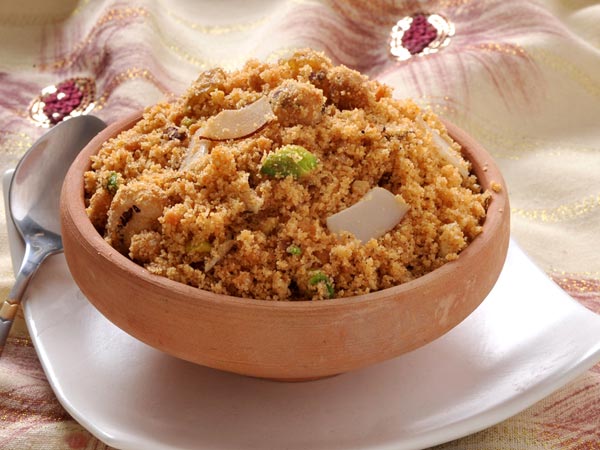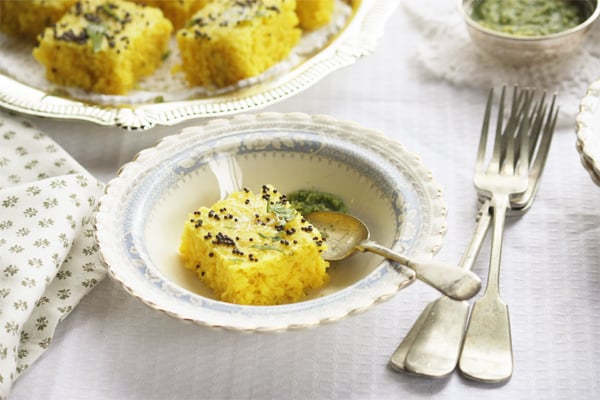Traditional Indian Dessert Recipes Biography
Source(google.com.pk)Homesickness sets in soon after I return from India. I crave potato paranthas fresh from the griddle, endless shelves of mithai (Indian sweets), at the bazaar, and the warm smell of spices drifting around the house. On such days, nothing brings me more comfort than standing in the kitchen and stirring together hot milk and sugar to make my own mithai. The recipe belongs to my grandmother, and that brings me closer to home.
As a child, I remember spending long summer days at my maternal grandmother Nani's house cooped up inside -- it was far too hot outside to leave. I’d spend a lot of my time in the kitchen, listening to the pressure cooker whistle and the mustard seeds crackle. I’d also eat -- a lot. Nani’s freezer was always stocked with my favorite mango-flavored ice cream bars. Usually there was also kulfi, but I’ll admit that as a five-year old, I would select the brightly colored mango popsicle over the kulfi. I loved smelling the spices, but couldn’t grasp the concept of including cardamom and saffron in dessert. I understand now that I was missing out. When I think of India during summer, two memories instantly cross my mind, both including kulfi. One is at Nani’s -- after a lunch usually consisting of Indian flatbread and vegetable and meat curries, everyone would sit around the table and devour kulfi together. The second is from when I lived in Mumbai. I remember stopping by the Parsi Dairy Farm store with my mother and watching a worker pull out a stack of elegantly packaged disks from a box smoky with liquid nitrogen: kulfi. I wondered how they had achieved such a sweet flavor and creamy texture.
Recently I found myself missing home and decided to make kulfi, so I called my grandmother to ask for the recipe. She explained the process to me, but couldn’t tell me the exact measurements for spices or sugar. “I just put however much I feel is right,” she said. That’s one of the things that I think makes a great cook -- the ability to add based on experience and instinct. She’s been making this kulfi for years, and it is flawless.
A typical ice cream calls for heavy cream and egg yolks to achieve a custard-like base, then it is churned. The same result can be achieved using whole milk and bread, as long as it is boiled until thickened. That is why it is important to use whole milk, as skim milk may not result in the same consistency and will leave you with a kulfi full of ice crystals. My grandmother doesn’t add cornstarch, but I found that it was easier to use for thickening the mixture. (It is, of course, optional.) I like that this recipe doesn’t require an ice cream machine, but its texture is still smooth and creamy -- think somewhere in between gelato and an ice pop. Kulfi doesn’t necessarily have to have nuts, but pistachios are full of flavor and compliment the spices so well. My grandmother adds nuts and I don’t question her. Kulfi is a classic -- Indians have been making it for centuries to escape the heat -- so I hope you try it out, too. You’ll be thanking Nani.
Here is an honest outlook about some Traditional Indian desserts. The Indian Nationalities will tell you they most all have a sweet tooth. But how can you not when you see all the tasty treats they have and make. I will admit, looking at some of the pictures of their yummy desserts they do not look all that good but when you read what is in them you may just change your mind. Why not tempt fate and try to prepare one a Traditional Indian Dessert and give it a try for yourself!.
Being as though the Indian Culture love sweet treats there are so many different things you can find to get started with. As we all should do we need to allow for variety in the food department and go out on a limb to try new and different foods on occasion. Sometimes these cuisines send us to exotic new lands and exciting Countries of the food world! Every time I go out to eat weather it is to a Chinese buffet or some place else I try to make it a point to get something that I have never tried. Even if it does have a name that I can not pronounce I will ask what is in it then make my judgment to get it or not. You may find that something you thought you would never like, and maybe it will become your new favorite food. Below I am going to post up a few different Traditional Indian desserts you Should try to make
Create your syrup / sugar mixture by combining 150g of sugar with an equal amount of water. Cook this mixture over the stove for 5 to ten minutes. Add to your syrup mixture 100g of ghee as well as a dash of salt and baking soda. Stir your syrup until you begin to see it bubble. Add 100g of Maida and add any water as needed to soften the syrup into a pourable liquid.
From the syrup, form even ball of sugar and flatten each of these balls slightly on each side. These sugar balls will now be deep friend in oil for a short time. When each ball is finished deep frying, cover each ball with the syrup mixture and place aside to decorate with any toppings you choose, a popular favorite is coconut.
Traditional Indian Basundi
Add - Milk 2 ltrs.
Add - Charoli seeds 25 gms.
Add - Sugar 200 gms.
Add - Green cardamom powder 1/2 tsp.
In a heavy frying pan pour milk to cover the bottom of the pan and slowly bring to a boil. Simmer and reduce the heat to bring the milk let the milk thicken. Continue to mix the milk or it will easily begin to stick to the bottom of the pan, ruining your dish. To the thickened milk we will add the following, charoli seeds, sugar, and green cardamom powder. Continue to boil your mixture on the stove for 7-12 minutes. Once finished, pour into small serving bowl and place the bowl into the refrigerator and allow to harden.
Cham Cham
Traditional Indian Chamcham
Add - 2-3 tbsps lime/lemon juice
Add - 2 liters full cream/ whole milk
Add - 5 tsps flour
Add - 2 cups sugar
Add - 4 cups water
Add - 2-3 tbsps rose water or a few strands of saffron
Add - 200 gms fresh thickened/ heavy/ double cream
Add - A few drops of yellow food colour (according to your preference)
Start with getting yellow paneer, or adding yellow coloring to a paneer. Then you will begin to shape each paneer into an oblong shape. Prepare a very thin sugary base syrup. Boil slowly for ten minutes over a low heat. Let the paneer soak in the syrup for 24 hours. The following day add plain kova, fresh cream and powdered sugar to your paneers.
Add a heavy Kadai to your mix and lower the temperature. Allow this mixture to become cool, then knead the mix. Cut the Cham cham in sandwich sized pieces to match the kova and sandwich them between the kova. You can add decorative toppings, or tasty toppings like whip cream and a cherry!
Traditional Indian Jalebi
Add - Refined flour 300 gms.
Add - Green cardamom powder 1/2 tsp.
Add - Curd (yogurt) optional
Add - Sugar 500 gms.
Add - Color (optional) a few drops
Add - Soda bi-carb 1 tsp.
Add - Ghee for deep frying
Began by combining some soda, some plain yogurt, and flour to water to make a cold batter. Let stand over night. Mix occasionally to maintain consistency. Add green cardamom powder to a half water, half sugar mixture and prepare for 25 minutes over a low heat.
Fire Ghee in a your favorite Kadhai. Pour the batter you have after the 25 minutes of preparation into a jalebi cloth and then pour it into medium hot Ghee giving jalebi shapes. Heat and cook both sides and then remove from heat and let cool. To create your own jalebi cloth, grab any fairly tough cloth material you have a
Rossogolla
Add - 1 1/2 cups sugar
Add - 1/2 tsp. citric acid
Add - 2-3 drops rose essence
Add - 4 cups water
Add - 1 litre milk
Bring a quarter pan of milk to a boil, then let sit for 4 hours to completely cool. Reheat the milk after removing the filmy top layer of milk cream. Add a citric acid and water mixture until you have completely curdled the milk. Heat sugar water syrup mixture in a wide sauce pan. Bring the new mix to a boil and cloth strain.
Knead the dough into 12 equal size balls. Cover and Boil for 15 minutes. Remove from heat and let stand until cool. Add Essence and allow your 12 balls to chill over night.
Traditional Indian Food Dessert Summary
These are just a few of the hundreds of recipes there are for Indian treats you will definitely enjoy. Some of them may be harder then others to make but what have you go to loose by at least trying to make one of them. You will be quite surprised at how well you did and how oh so good they are.
Traditional Indian Dessert Recipes Indian Desserts Recipes Halwa Kheer With Condensed Mild Pistachio Recipes Easy For Diwali Menu Pictures

Traditional Indian Dessert Recipes Indian Desserts Recipes Halwa Kheer With Condensed Mild Pistachio Recipes Easy For Diwali Menu Pictures

Traditional Indian Dessert Recipes Indian Desserts Recipes Halwa Kheer With Condensed Mild Pistachio Recipes Easy For Diwali Menu Pictures

Traditional Indian Dessert Recipes Indian Desserts Recipes Halwa Kheer With Condensed Mild Pistachio Recipes Easy For Diwali Menu Pictures

Traditional Indian Dessert Recipes Indian Desserts Recipes Halwa Kheer With Condensed Mild Pistachio Recipes Easy For Diwali Menu Pictures

Traditional Indian Dessert Recipes Indian Desserts Recipes Halwa Kheer With Condensed Mild Pistachio Recipes Easy For Diwali Menu Pictures

Traditional Indian Dessert Recipes Indian Desserts Recipes Halwa Kheer With Condensed Mild Pistachio Recipes Easy For Diwali Menu Pictures

Traditional Indian Dessert Recipes Indian Desserts Recipes Halwa Kheer With Condensed Mild Pistachio Recipes Easy For Diwali Menu Pictures

Traditional Indian Dessert Recipes Indian Desserts Recipes Halwa Kheer With Condensed Mild Pistachio Recipes Easy For Diwali Menu Pictures

Traditional Indian Dessert Recipes Indian Desserts Recipes Halwa Kheer With Condensed Mild Pistachio Recipes Easy For Diwali Menu Pictures

Traditional Indian Dessert Recipes Indian Desserts Recipes Halwa Kheer With Condensed Mild Pistachio Recipes Easy For Diwali Menu Pictures
No comments:
Post a Comment